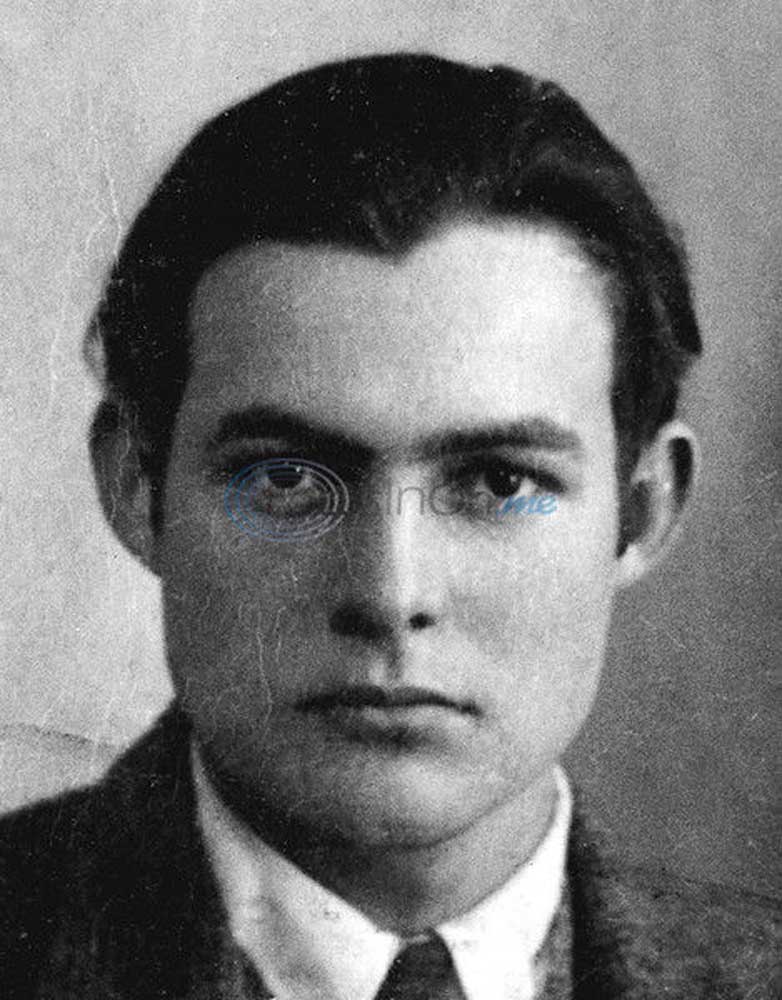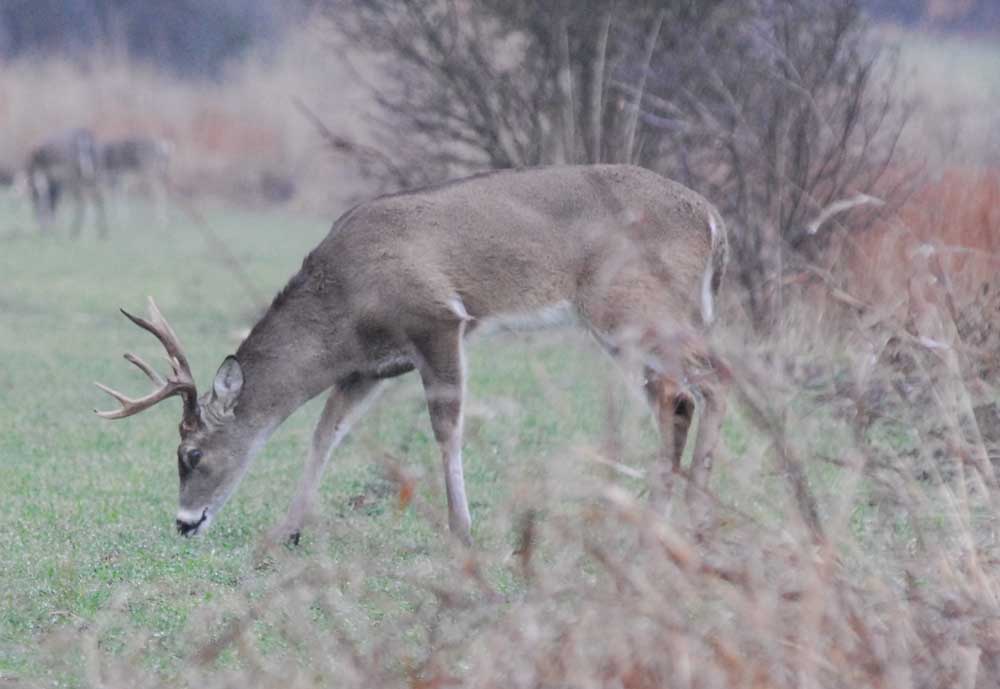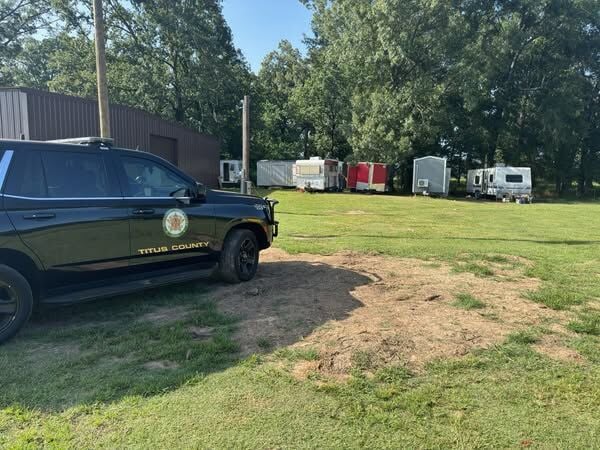Hemingway’s Legendary Writing Studio: Spanish colonial home a glimpse into author’s life
Published 10:04 pm Saturday, July 27, 2013

- Ernest Hemingway 1923 passport photo
KEY WEST, Fla. — Any trip to this sparkling treasure of a city surrounded by the Gulf of Mexico’s turquoise waters would not be compete without a visit to The Ernest Hemingway Home and Museum.
The beautiful home of the Pulitzer and Nobel prize-winning author is nestled in old town Key West. The tour takes about 30 minutes and costs $13 for adults and $6 for children. Admission for kids 5 and younger is free.
Hemingway, who lived in the Spanish colonial home with his second wife Pauline and their two sons, owned the property until his death in 1961. It became a museum honoring the author in 1964.
He worked on many of his best-known manuscripts in the Key West property’s second-story writing studio.
“Hemingway was probably our first and most popular writer to take residence in Key West,” said Dave Gonzales of the Ernest Hemingway Home and Museum. “He lived here only nine years but wrote 70 percent of his lifetime works in that nine-year period — the most prolific period of his life.”
Among those writings were “For Whom the Bell Tolls,” “The Snows of Kilimanjaro” and the Key West-based “To Have and Have Not,” his only novel set in the U.S.
TRAVELING TO KEY WEST
While living in Paris, Hemingway was encouraged to visit Key West. Also, after marrying Pauline, he ventured to the city to pick up a Ford Roadster, a wedding gift from her wealthy Uncle Gus.
However, he and his wife had to wait three weeks for the car while living in an apartment on Simonton Street. There he finished the partially autobiographical novel about World War I, “A Farewell to Arms.”
Also during that period, Hemingway and his wife forged friendships with Charles and Lorine Thompson. Charles Thompson introduced Hemingway to big game sport fishing.
And what better place to do that but in Key West, a place they grew to love.
Uncle Gus then purchased the home at Whitehead Street for them in 1931.
The house was built in 1851 and was in disrepair when purchased, but the Hemingways turned the home into the National Historical Landmark that thousands of tourists visit each year.
THE HOME
The house is furnished with European antiques the Hemingways collected during their many trips across the continent.
There also are many trophy mounts from Hemingway’s African safaris and hunting expeditions in western America.
Hemingway’s studio also is set up, and outside, there are the famous six-toed cats.
As the guide says, “the story goes that Hemingway made the acquaintance of a sea captain who owned an unusual six-toed tomcat, which captured Ernest’s fancy. Upon his departure from Key West, the captain presented the cat to Hemingway.
Today many of the numerous cats that inhabit the grounds still possess the unusual six toes.”
POOL
While Hemingway did want the pool at their residence, his travels while a war correspondent in the Spanish Civil War left the project up to his wife Pauline.
With him away in Spain, Mrs. Hemingway got the project going and the pool was installed for what was an astronomical sum of $20,000 in 1938. It was the first in-ground swimming pool in Key West. The labor was tough as the crew had to dig down in solid coral.
The tour guides will relay a story of Hemingway “exasperated at the expense of the venture, flinging down a penny on the half-built flagstone pool patio and bellowing, ‘Pauline, you’ve spent all but my last penny, so you might as well have that!'”
That penny is embedded in cement near the pool.
While he enjoyed the pool, it did take up the space where he had his boxing ring. He would spar with local amateur boxers including Shine Forbes.
The boxing ring was relocated to the site now occupied by the Blue Heaven Restaurant on Petronia Street.
SOUVENIRS
After your tour of the home and gardens, take time to visit the Hemingway Home Book Store and Gift Shop.
The store has all of Hemingway’s novels, poems and short stories as well as books about the famous author. Also, there are many publications about Key West.
In the gift shop, there are many souvenirs related to Hemingway as well as other writers and artists.
The home also was used in 1988 as the filming location of the James Bond movie “License to Kill.”
In the scene Bond (played by Timothy Dalton), an MI6 agent resigns his Double-0 status to take his revenge on drug lord Franz Sanchez. He then flees through the garden.
Who was Ernest Hemingway?
Ernest Miller Hemingway
July 21, 1899 to July 2, 1961
Before the gentlemen in the TV commercial, Ernest Hemingway may have been The Most Interesting Man in the World.
Hemingway was an American author and journalist who had a strong influence on 20th century fiction.
Hemingway produced most of his work between the mid-1920s and the mid-1950s, and won the Pulitzer Prize in 1952 for fiction (“The Old Man and the Sea”) won the Nobel Prize in Literature in 1954 “for his mastery of the art of narrative, most recently demonstrated in ‘The Old Man and the Sea,’ and for the influence that he has exerted on contemporary style.”
He published seven novels, six short story collections, and two nonfiction works. Three novels, four collections of short stories and three nonfiction works were published posthumously. Many of these are considered classics of American literature.
Hemingway was born in Oak Park, Ill. After high school, he reported for a few months for The Kansas City Star, before leaving for the Italian front to enlist with the World War I ambulance drivers. In 1918, he was seriously wounded and returned home. His wartime experiences formed the basis for his novel “A Farewell to Arms.”
He later moved to Paris and worked as a foreign correspondent.
“The Sun Also Rises,” Hemingway’s first novel, was published in 1926. This book helped glamorize the running of the bulls in Pamplona.
Hemingway later covered the Spanish Civil War and following the war he wrote “For Whom the Bell Tolls.”
Shortly after the publication of “The Old Man and the Sea” in 1952, Hemingway went on safari to Africa, where he was almost killed in two successive plane crashes that left him in pain or ill health for much of the rest of his life.
Hemingway had permanent residences in Key West, Fla., (1930s), and Cuba (1940s and 1950s).
In 1959, he bought a house in Ketchum, Idaho, where he committed suicide in the summer of 1961.






